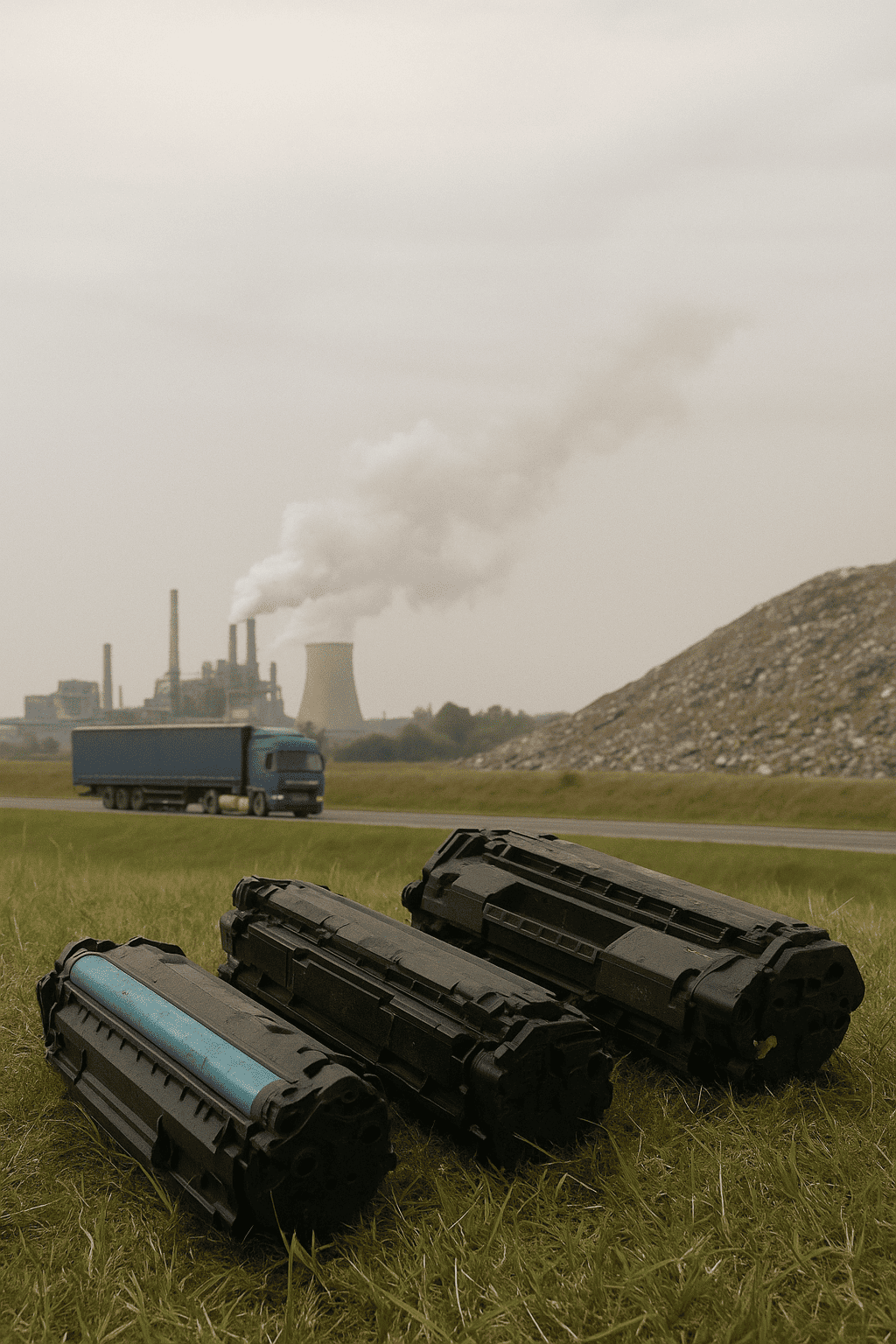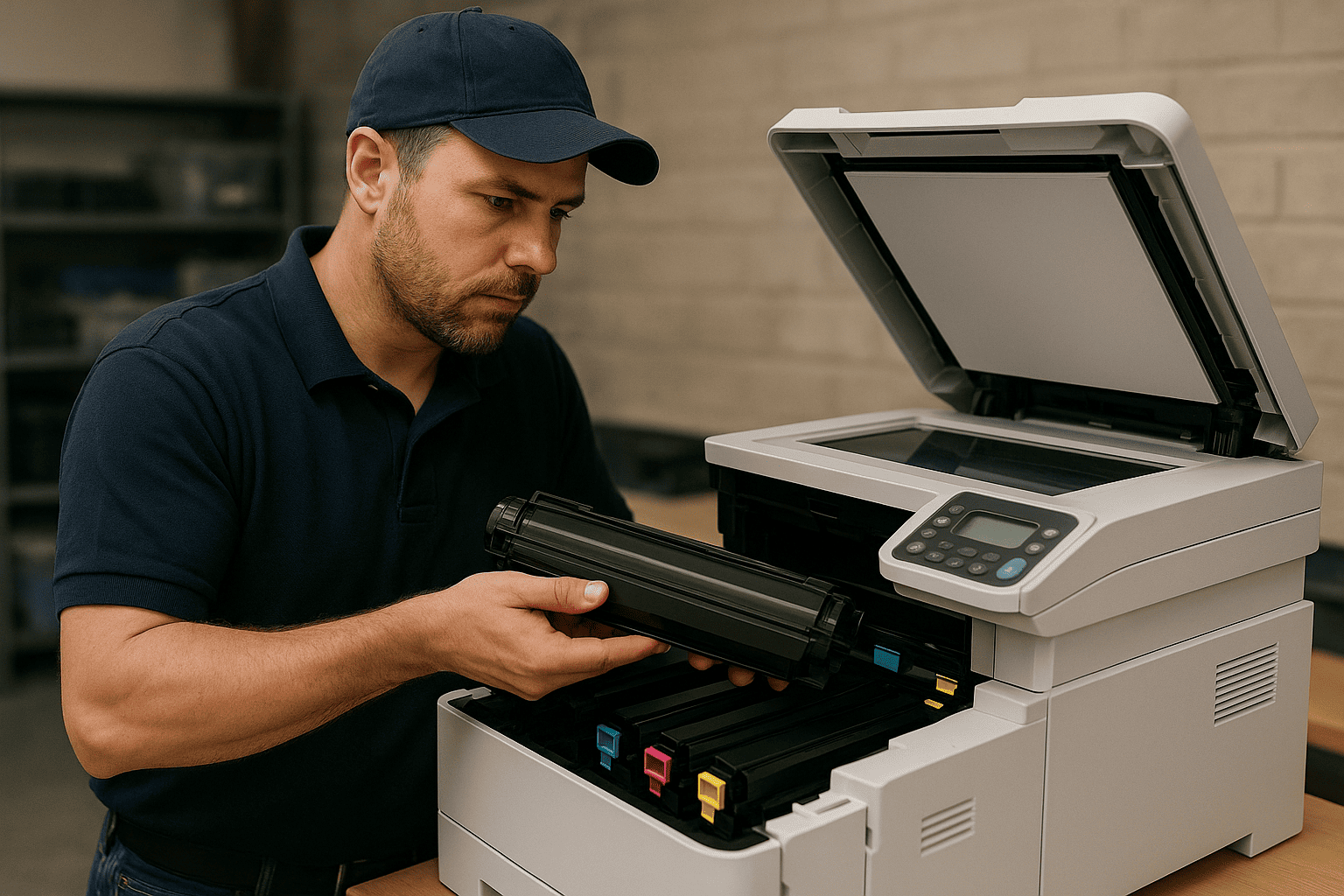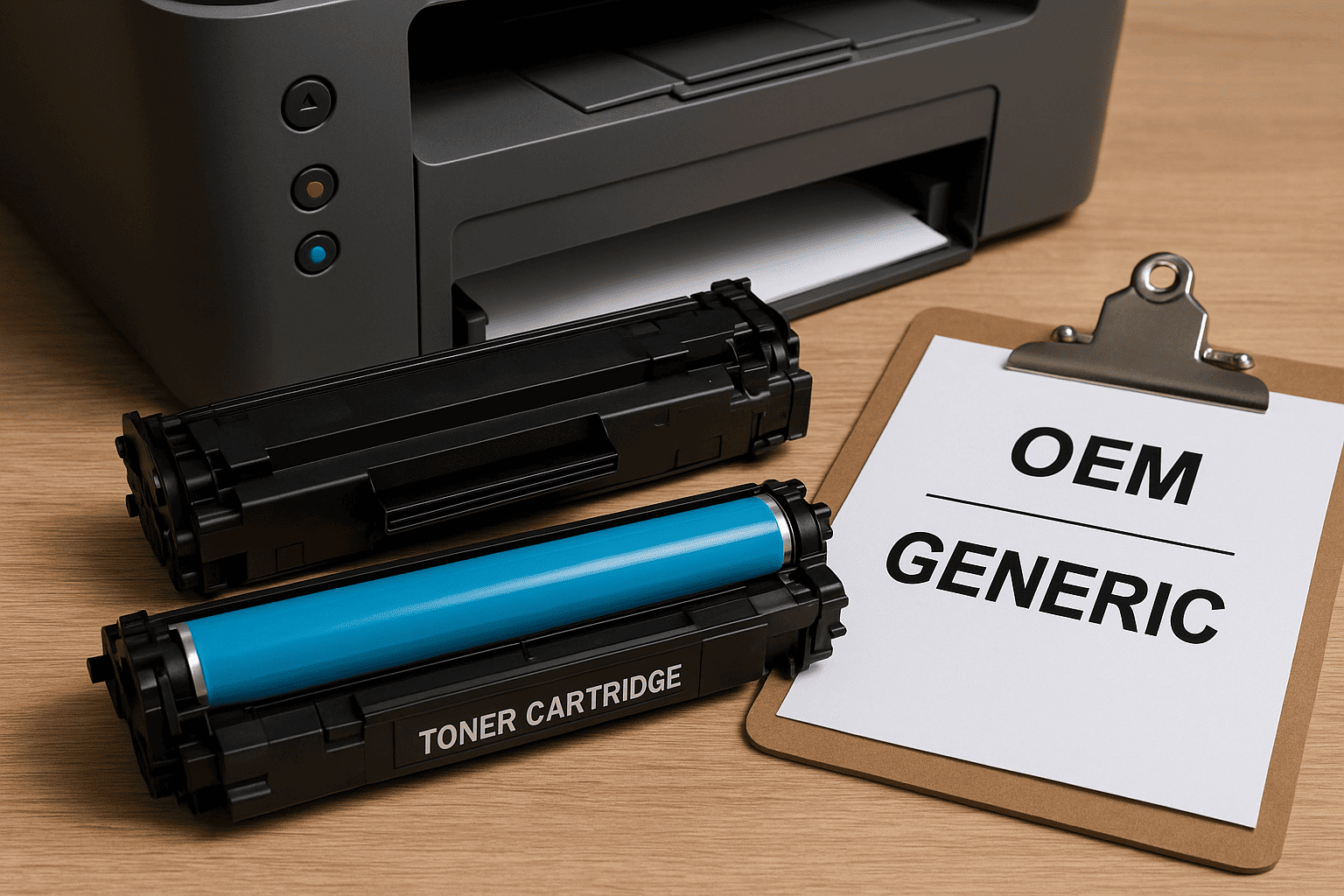It’s easy to get confused when buying toner, especially if you’re just starting out.
There are quite a few different terms to describe sometimes very similar things.
The terms that sound the most straightforward describe the yield of the toner, or how many pages that toner will print. Standard and high yield cartridges are exactly what they sound like, with the high yield printing a larger number of pages over the life of the toner.
Manufacturers look at what is known as page coverage as well, meaning how much of the page is actually being printed on – 5% appears to be pretty standard as an industry rating for pages printed. Beyond just counting pages and ink coverage, there are some pretty significant differences in the two yield types that not everyone thinks of when making a buying choice.

With the increased number of pages printed by high yield cartridges, there are fewer overall cartridges needed. As manufacturing toner produces greenhouses gases and other pollution, this can reduce some of those emissions.
Using cartridges with higher yield also means that fewer cartridges are being shipped overall, reducing transportation emissions and fossil fuel use. Landfills are also being packed with dead toner, and each one takes several hundred years to decompose.
Overall Costs
It may sound a little silly to say that something costing more will actually save money over time, but high yield toner ends up printing pages at a much lower cost each than standard toner. Like some hybrid cars, the higher up-front costs are overcome by lower operating expenses, making the initial investment worth the premium.

Service and Maintenance
Many offices lease or rent their printers from a company that may also require service contracts. In some cases, this could include replacing the toner.
If you have a choice in what kind of toner is used, requesting high yield could save you money on maintenance and service charges. Even if you own your equipment, the time someone spends purchasing and replacing standard yield toner could be better spent somewhere else.
Lifespan Concerns
It may be tempting to run out and buy the highest yield cartridges you can find to save time and money, but these types of toner might not be best for everyone. Toner comes from the factory with both a warranty and an expiration date, which means that there is an actual possibility that the toner can go bad and cause quality issues.
If you aren’t able to print enough to use up the high yield toner before it expires, you may face lower print quality or even damage to your printer. Take a look at the number of pages a high yield cartridge will produce and determine your actual printing needs over the course of a year. If you aren’t getting anywhere near the high yield cartridges’ capacity, a standard yield toner may be best for you.

OEM and Generic
Most printer manufacturers offer both a high and standard yield version of toner for their printers. If you happen to own one of the few that don’t have an OEM high yield option for your printer, you may be attracted to generic choices that list your printer brand as being compatible. Believe it or not, there is probably a good reason that your printer manufacturer doesn’t offer a high yield version of toner for that printer, and it isn’t just because they want more of your money.
There may be a technical reason the printer can’t handle high yield, whether it be page feeding speed or a power supply issue, and using a generic toner cartridge in one of these machines can cause some real problems.
Outside of voiding the warranty, you may actually wear or damage the printing surfaces inside the printer by using a cartridge that isn’t designed to work with that machine. In these cases, it may be best to look at a different type of printer that can handle high yield cartridges.
There are plenty of situations where buying standard yield toner is the best choice for your needs, whether it be your actual printing usage or compatibility with the type of printer you have. It pays to do some research on your actual need and your existing equipment to determine how (or if) a high yield cartridge choice will benefit you.
If you own a printer that can’t handle high yield toner, don’t be tempted to try a workaround by buying generic or compatible toner.
Many printer manufacturers sell the machines at a loss, knowing that they will make up the difference on toner over the life of that printer, so the costs to switch to a machine that can handle high yield may not be as tough as it seems up front.